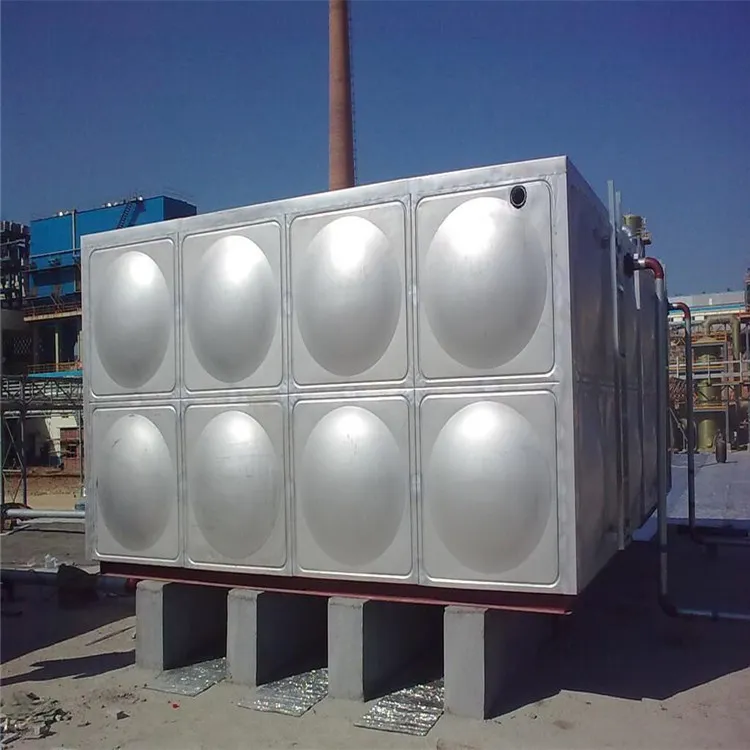loading...
- No. 9, Xingyuan South Street, Dongwaihuan Road, Zaoqiang County, Hengshui, Hebei, China
- admin@zjcomposites.com
- +86 15097380338
- Welcome to visit our website!
frp water softener tank
Understanding FRP Water Softener Tanks
Water quality is a critical aspect of modern living, impacting everything from household chores to health. One effective solution for improving water quality is the use of water softeners, which help reduce the hardness of water by eliminating minerals like calcium and magnesium. Among various designs, Fiberglass Reinforced Plastic (FRP) water softener tanks have gained popularity due to their durability and efficiency.
What are FRP Water Softener Tanks?
FRP water softener tanks are designed to house the softening resin and facilitate the ion exchange process that removes hardness from water. The tank is made from fiberglass, a composite material that combines strands of glass with resin. This construction gives FRP tanks several advantages over traditional tanks made from materials like steel or polyethylene.
Advantages of FRP Tanks
1. Durability One of the most significant benefits of FRP water softener tanks is their resistance to corrosion and chemical degradation. Unlike steel tanks that can rust over time, FRP tanks maintain their integrity even in harsh conditions. This longevity makes them a cost-effective solution in the long term.
2. Lightweight FRP tanks are considerably lighter than their steel counterparts, making installation easier and allowing for more flexible placement options. This feature is particularly beneficial in residential applications where space may be limited.
3. High Strength Despite being lightweight, FRP tanks are strong and can withstand high pressures. This strength ensures that they can handle the demands of water softening systems effectively.
4. Insulation Properties The insulating properties of fiberglass help maintain consistent water temperatures within the tank, enhancing the efficiency of the softening process.
frp water softener tank

5. Aesthetic Appeal FRP tanks can be manufactured in various colors and finishes, allowing homeowners to choose a product that matches their home decor better than traditional metal tanks.
How Do FRP Water Softener Tanks Work?
The primary function of an FRP water softener tank is to facilitate the ion exchange process. The tank is filled with resin beads, usually made from polystyrene, which are charged with sodium ions. When hard water flows through the tank, calcium and magnesium ions are attracted to the resin beads and replace the sodium ions. This process effectively reduces the hardness of the water.
Over time, the resin beads become saturated with calcium and magnesium and lose their effectiveness. To restore the resin's capabilities, a regeneration cycle is initiated, during which a brine solution is flushed through the tank. The high concentration of sodium in the brine reverses the ion exchange process, allowing the calcium and magnesium ions to be flushed out and the resin to be recharged.
Maintenance and Care
FRP tanks generally require minimal maintenance, but regular checks are essential to ensure optimal performance. It is advisable to monitor the salt levels in the brine tank and refill as needed. Additionally, periodic inspections for leaks or damage to the tank should be conducted to prevent any issues.
Conclusion
In conclusion, FRP water softener tanks represent an excellent solution for households looking to improve their water quality. With their durability, lightweight nature, and corrosion resistance, they offer numerous advantages over traditional materials. By investing in an FRP water softener tank, homeowners can ensure cleaner, softer water for laundry, bathing, and cooking, ultimately enhancing the overall quality of life. As water quality continues to be a pivotal issue, solutions like FRP tanks will play an essential role in modern water treatment.
-
The Rise of FRP Profiles: Strong, Lightweight, and Built to LastNewsJul.14,2025
-
SMC Panel Tanks: A Modern Water Storage Solution for All EnvironmentsNewsJul.14,2025
-
GRP Grating: A Modern Solution for Safe and Durable Access SystemsNewsJul.14,2025
-
Galvanized Steel Water Tanks: Durable, Reliable, and Ready for UseNewsJul.14,2025
-
FRP Mini Mesh Grating: The Safer, Smarter Flooring SolutionNewsJul.14,2025
-
Exploring FRP Vessels: Durable Solutions for Modern Fluid HandlingNewsJul.14,2025
-
GRP Structures: The Future of Lightweight, High-Performance EngineeringNewsJun.20,2025
